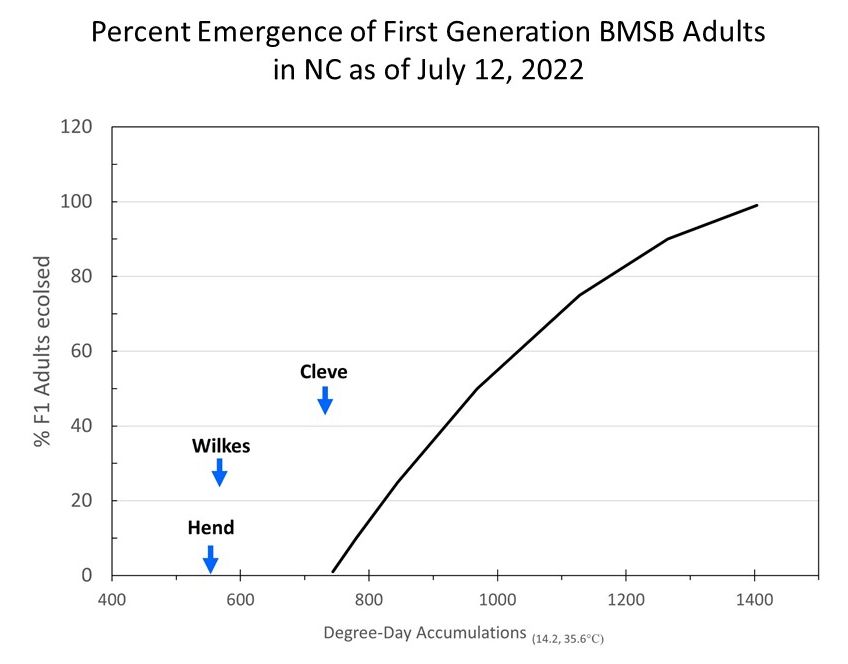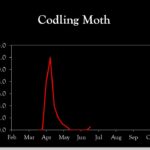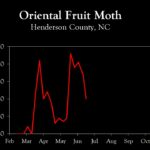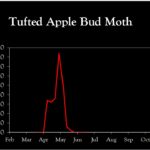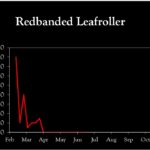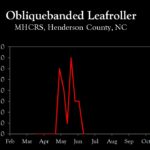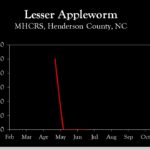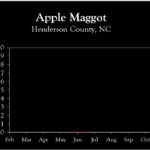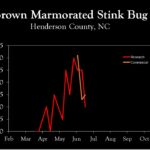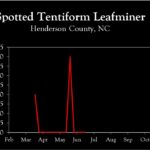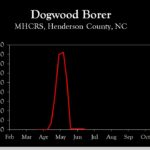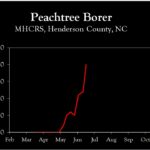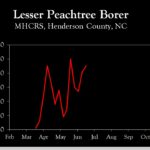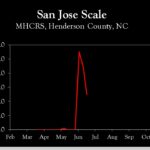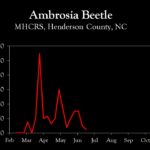WNC Orchard Insect Pest Populations – July 12, 2022
go.ncsu.edu/readext?874385
en Español / em Português
El inglés es el idioma de control de esta página. En la medida en que haya algún conflicto entre la traducción al inglés y la traducción, el inglés prevalece.
Al hacer clic en el enlace de traducción se activa un servicio de traducción gratuito para convertir la página al español. Al igual que con cualquier traducción por Internet, la conversión no es sensible al contexto y puede que no traduzca el texto en su significado original. NC State Extension no garantiza la exactitud del texto traducido. Por favor, tenga en cuenta que algunas aplicaciones y/o servicios pueden no funcionar como se espera cuando se traducen.
Português
Inglês é o idioma de controle desta página. Na medida que haja algum conflito entre o texto original em Inglês e a tradução, o Inglês prevalece.
Ao clicar no link de tradução, um serviço gratuito de tradução será ativado para converter a página para o Português. Como em qualquer tradução pela internet, a conversão não é sensivel ao contexto e pode não ocorrer a tradução para o significado orginal. O serviço de Extensão da Carolina do Norte (NC State Extension) não garante a exatidão do texto traduzido. Por favor, observe que algumas funções ou serviços podem não funcionar como esperado após a tradução.
English
English is the controlling language of this page. To the extent there is any conflict between the English text and the translation, English controls.
Clicking on the translation link activates a free translation service to convert the page to Spanish. As with any Internet translation, the conversion is not context-sensitive and may not translate the text to its original meaning. NC State Extension does not guarantee the accuracy of the translated text. Please note that some applications and/or services may not function as expected when translated.
Collapse ▲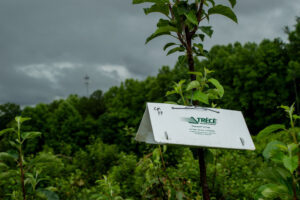 Codling moth and oriental fruit moth populations remain relatively low throughout the region, but they both remain a potential threat based on their stage of development. In Henderson County, second generation codling moth is in the early stages of egg laying, and will continue to lay over the next several weeks. Second generation OFM is in the early stages of emergence. In lower elevation Cleveland County, both second generation codling moth and third generation OFM is in the midst of egg laying (about 60% complete). While a single insecticide application targeting these populations is sufficient in most orchards where populations are low, the use of pheromone traps is the only way to monitor population density and confidently make a decision to not spray.
Codling moth and oriental fruit moth populations remain relatively low throughout the region, but they both remain a potential threat based on their stage of development. In Henderson County, second generation codling moth is in the early stages of egg laying, and will continue to lay over the next several weeks. Second generation OFM is in the early stages of emergence. In lower elevation Cleveland County, both second generation codling moth and third generation OFM is in the midst of egg laying (about 60% complete). While a single insecticide application targeting these populations is sufficient in most orchards where populations are low, the use of pheromone traps is the only way to monitor population density and confidently make a decision to not spray.
First generation brown marmorated stink bug (BMSB) adults are on the cusp of emergence in Cleveland County (see figure below), so expect adult numbers to be increasing over the next several weeks. Adult emergence is still several weeks away in higher elevation orchards in Henderson, Haywood and Wilkes Counties. Most pyrethroid insecticides provide good control of BMSB. Pyrethroids will also do an excellent job of controlling OFM populations.
Bifenthrin Now Registered on Apples and Peaches
For the past 10 years or so, bifenthrin has been allowed on apples and peaches via a Section 18 label. Last November the EPA approved a full label (Section 3) for use on pome and stone fruits. Products available for use include Brigade 2EC and WSB, Fanfare 2EC and 2SC, and the premix Hero (contains bifenthrin and zeta-cypermethrin). Maximum use after petal fall cannot exceed 3 applications per year and a total of 0.45 lbs AI per acre.
2022 Apple Field Day
Finally, remember that Apple Field Day will occur on July 28 at the Mountain Horticultural Crops Research and Extension Center in Mills River. There are many good presentations scheduled and admission is free!
Learn more about southeastern apple insect pests at the Apple Insect Management page.
2022 Average Weekly Trap Captures
| HENDERSON COUNTY | |||
| Insects per trap | |||
| Jun 27 | Jul 5 | Jul 11 | |
| Codling moth | 0.0 | 0.0 | 0.5 |
| Oriental fruit moth | 20.5 | 17.0 | 10.0 |
| Tufted apple bud moth | 0.0 | 0.0 | 0.0 |
| Redbanded leafroller | 0.0 | 0.0 | 0.0 |
| Obliquebanded leafroller | 3.0 | 0.0 | 0.0 |
| Lesser appleworm | 0.0 | 0.0 | 0.0 |
| Apple maggot (abandoned and research orchards) | 0.0 | 0.0 | 0.0 |
| Brown marmorated stink bug (commercial) | 3.1 | 1.3 | 1.5 |
| Brown marmorated stink bug (unsprayed) | 2.5 | 2.5 | 1.0 |
| Spotted tentiform leafminer | 0.0 | 0.0 | 0.0 |
| Dogwood borer | 1.0 | 1.0 | 0.0 |
| Peachtree borer | 11.0 | 12.0 | 20.0 |
| Lesser peachtree borer | 27.0 | 41.0 | 45.0 |
| San Jose scale | 27.5 | 22.5 | 12.5 |
| Ambrosia beetle (all species) | 3.0 | 1.0 | 0.5 |
*Note that these averages illustrate only the timing of insect emergence and fluctuations in populations, and are not representative of population levels in any given orchard. The only way to have an accurate assessment of an individual orchard’s populations is to set up traps in that orchard.
2022 Accumulated Degree Days
| HENDERSON COUNTY | ||||
| Jun 27 | Jul 5 | Jul 11 | ||
| Codling moth (Biofix: April 22) | 1126 | 1320 | 1478 | |
| Oriental fruit moth (Biofix: April 12) | 1541 | 1775 | 1963 | |
| Tufted apple bud moth (Biofix: April 27) | 1343 | 1577 | 1766 | |



